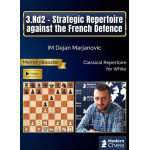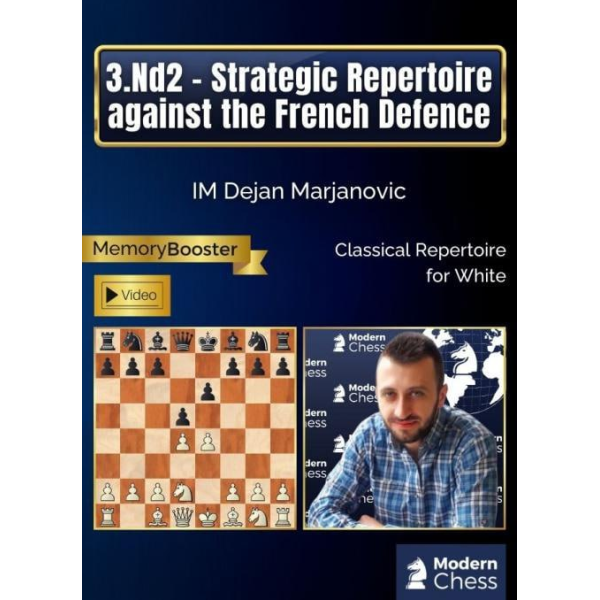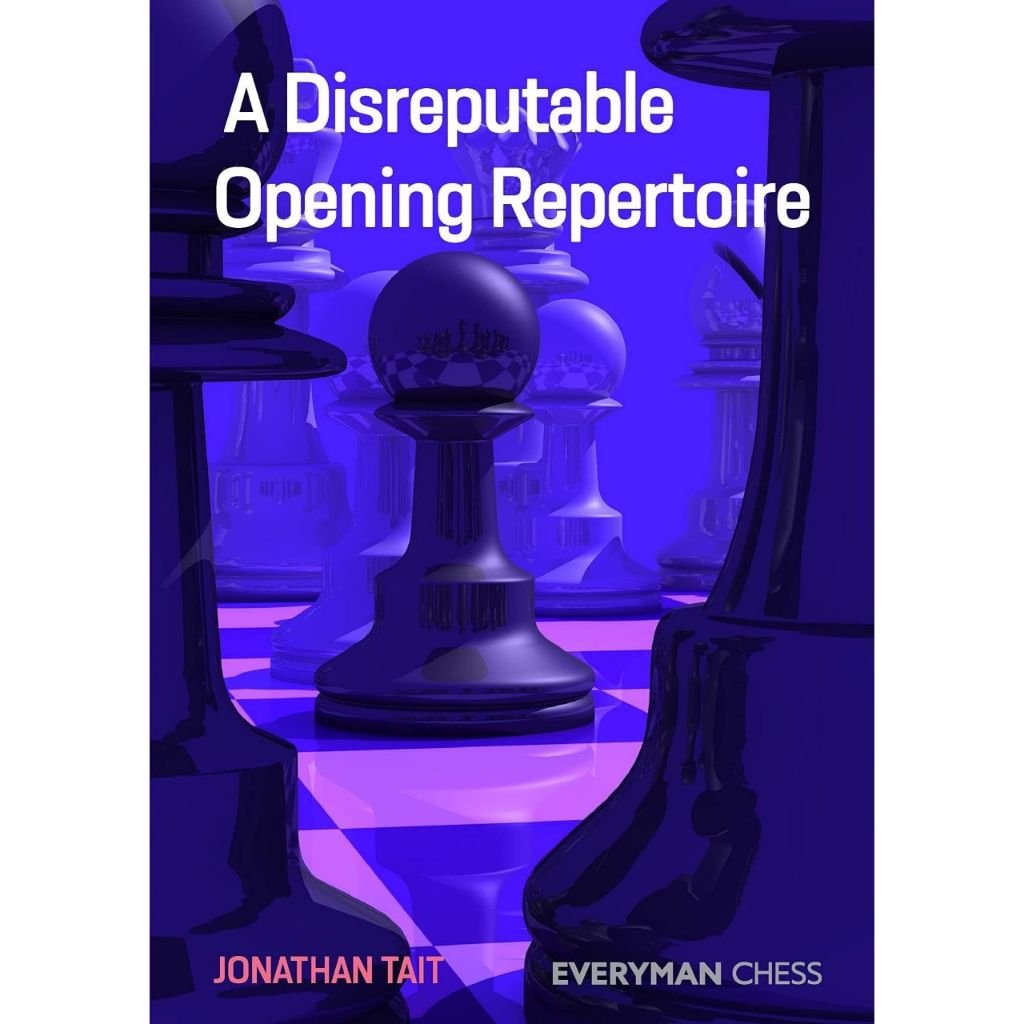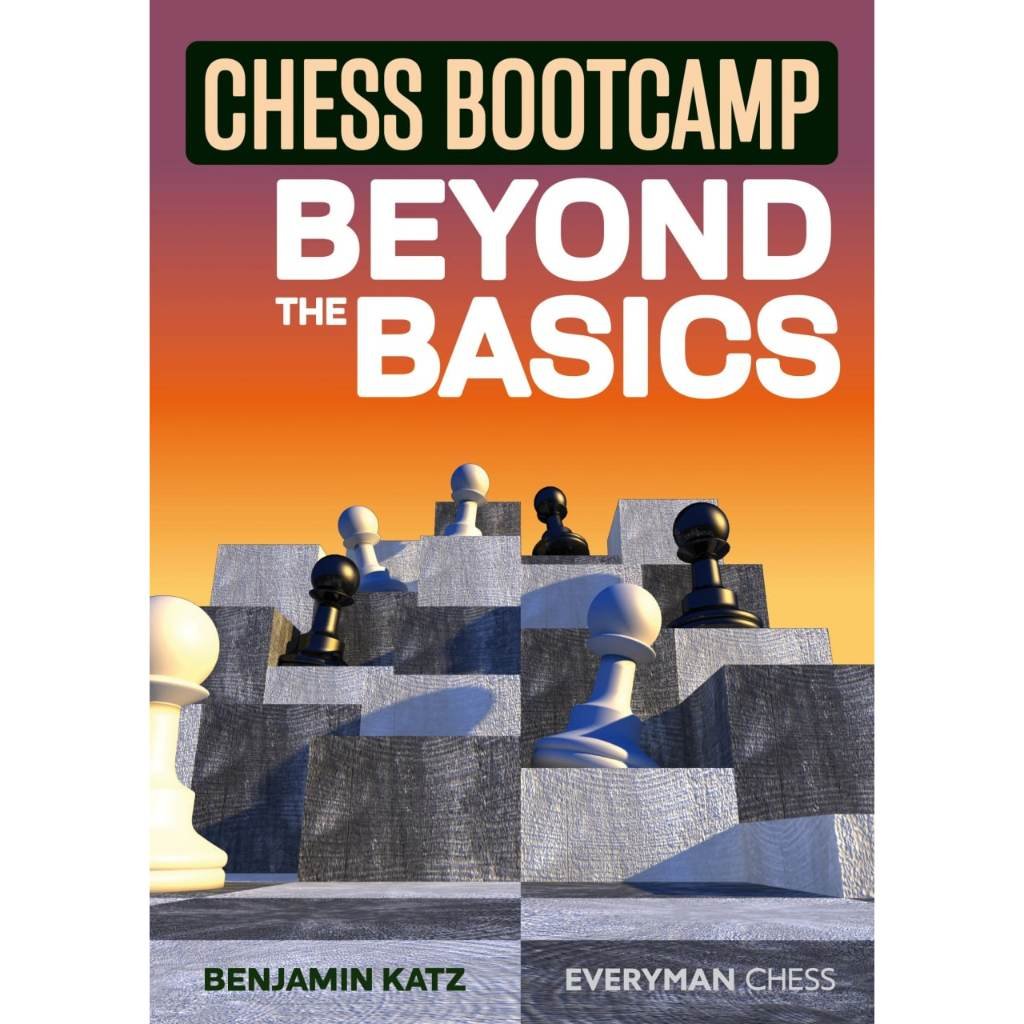3.Nd2 – Strategic Repertoire against the French Defence Modern Chess
Original price was: $ 100.$ 3Current price is: $ 3.
OFF - 97%10000 in stock

Description
Reviews (1)
Description
We are glad to announce that IM Dejan Marjanovic has released his first course for Modern Chess – 3.Nd2 – Strategic Repertoire against the French Defence. If you are looking for both ambitious, and solid repertoire for White, this course is a perfect match for you. IM Marjanovic proves that the so-called Tarrasch Variation withstands the test of modern engines. Black should be extremely precise in order not to find himself in a huge trouble.
The course consists of 9 theoretical chapters, 12 interactive test positions, a Memory Booster, and a Video Version (3h and 40min).
The starting position of the course is being reached after the moves 1.e4 e6 2.d4 d5 3.Nd2

At this point, Black has two main continuations – 3…Nf6 and 3…c5. Of course, the course covers all the other options as well.
Chapter 1 is very important since it shows how to deal with 3…Nf6.
The most important position for the chapter arises after 4.e5 Nfd7 5.f4 c5 6.c3 Nc6 7.Ndf3 Qb6 8.a3

The idea is very simple: not only preventing …Bb4+ but also preparing b4 to gain space on the queenside. However, the potential weakness of b3 remains the key issue, and Black has a few ideas for exploiting it. We need to learn a few key concepts: 1. When Black plays …a5, we react with b3!, preventing …a4, which would lead to the closing of the queenside and take away important squares for us (b3 and c4). 2. On every …Be7 we instantly push h4! preparing sacrifice on h7. 3. If Black employs the typical …f6 break to undermine the center, we proceed with Bd3. (d4 is no longer hanging due to the possibility of Bg6+ at the end).
Chapter 2 is dedicated to the system with 3…Be7

The Morozevich Variation. This move can be described as a high-class waiting move. White cannot create any serious threats in the next move, so Black is looking for White to make a stronger commitment before deciding whether to play …c5 (which would be indicated after 4. e5 or 4. Bd3) or …Nf6 (which would be more likely after 4. Ngf3).
The system suggested by Marjanovic is based on 4.e5. The most principled move by White. White’s idea is to proceed with f2-f4 followed by Ndf3, and then move another knight to e2, just as in Chapter 1.
The following three chapters deal with 3…c5. This is objectively Black’s strongest response to 3.Nd2. Black immediately makes use of the fact that now the d4-pawn is not protected. In this case, we answer with 4.Ngf3.

This setup is part of the Tarrasch Variation, where White aims for a flexible and solid structure. The knight on f3 complements the central pawns and keeps options open for future development.
Besides 4…Nc6, Chapter 3 also deals with 4…cxd4 5.Nxd4 Nc6.

In this case, we continue with 6.Bb5 when the move 6…Bd7 would be answered by means of 7.Nxc6. As you will learn form the analysis, the arising structures are practically more uncomfortable for Black.
In Chapter 4, Marjanovic deals with the position arising after 5…Nf6 6.e5

The author justifies his choice in the following way, “I chose this line because we have the e5 pawn against the d5-e6-f7-g7-h7 structure. In this structure, White always has good attacking possibilities.”
Chapter 5 features the line with 4…Nf6

The move 4…Nf6 develops the knight to a natural and active square. It supports the center and increases pressure on White’s central pawns. Once again, our reaction will be 5.e5!. This is an aggressive and principled continuation, consistent with White’s aim to control the center and initiate an aggressive plan in the position.
In Chapter 6, the author deals with the so-called Guimard Variation arising after 3.Nd2 Nc6

This interesting move was first played in the game Spielmann – Nimzowitsch, Berlin 1928, and it’s still a part of the repertoire of some strong GMs like Milan Drasko, Christian Bauer, Vaganian Rafael, and many other strong players. He immediately challenges the center and intends to pressure the opponent into advancing his pawn to e5. Afterward, as Black rapidly develops his pieces, he will aim to undermine White’s center with typical f7-f6, and later, if possible, with e6-e5.
The suggestion of IM Marjanovic is 4.Ngf3 Nf6 5.e5 Nd7 6.Nb3

Since Black’s idea is to play Be7 and undermine the center with f6, White wants to develop the bishop on f4 and fight for the e5 square.
Chapter 7 is dedicated to the solid Rubinstein Variation arising after 3…dxe4 4.Nxe4 Nd7

This is the starting position of the Rubinstein Variation of the French Defence. It is named after Akiba Rubinstein, who played it in several games between 1907 and 1912. This is one of the most solid lines of the French, favored by specialists in this opening such as Victor Korchnoi, Rafael Vaganian, Evgeny Bareev, Georg Meier, Dragan Kosic, and several others.
In his analysis, Marjanovic proves that White can fight for an advantage after 5.Nf3 Ngf6 6.Nxf6 Nxf6 7.c3!
In Chapter 8, you will learn how to fight against the Fort Knox Variation arising after 3…dxe4 4.Nxe4 Bd7

By developing the traditionally problematic French bishop from c8 to c6 and then proceeding with a natural development of the kingside pieces, Black constructs an incredibly solid defensive setup. This slow but strategically well-thought-out plan allows Black to maintain a solid position reminiscent of the Caro-Kann defense. This formation aims to frustrate White, who often becomes overly ambitious and vulnerable to counterattacks. Amazing players such as Karpov, known for their classical style, and creative grandmasters like Jobava have embraced this variation with great success.
Here, our main line goes 5.Nf3 Bc6 6.Bd3 Nd7 7.0-0 Ngf6 8.Re1!

A significant improvement over the previous theory! By playing 8.Re1, White aims for a few ideas: 1. If Black exchanges all pieces on e4, the White rook will come to the mysterious g4 or h4 square, helping White in preparing an attack. 2. After Neg5, the rook is poised to make a sacrifice with Rxe6! Black faces huge practical difficulties in this line.
The last Chapter 8 deals with Black’s rare options in response to 3.Nd2. You will see the moves 3…a6, 3…h6, 3…f5, and 3…b6. It goes without saying that none of these moves manages to equalize.
Reviews (1)
1 review for 3.Nd2 – Strategic Repertoire against the French Defence Modern Chess
Leave a Reply











David (verified owner) –
I bought this course with video few weeks ago (thanks to @JRHat for recommending it to me).